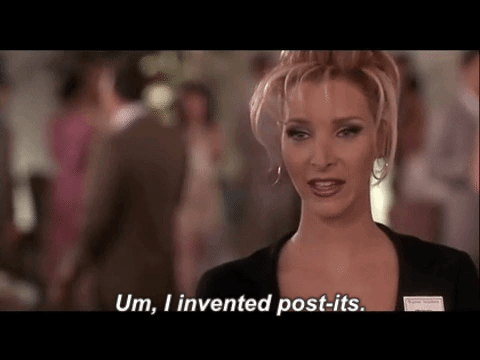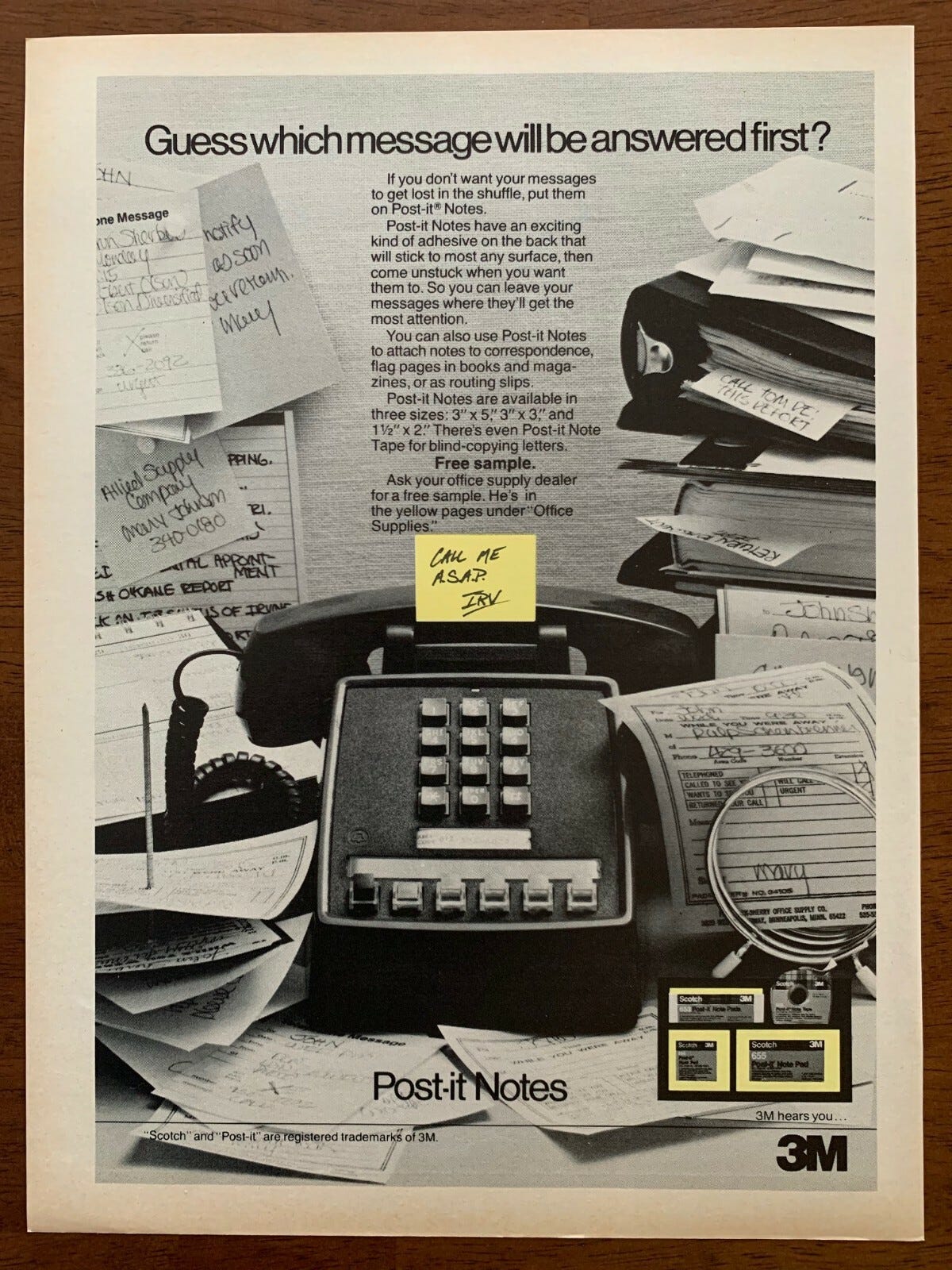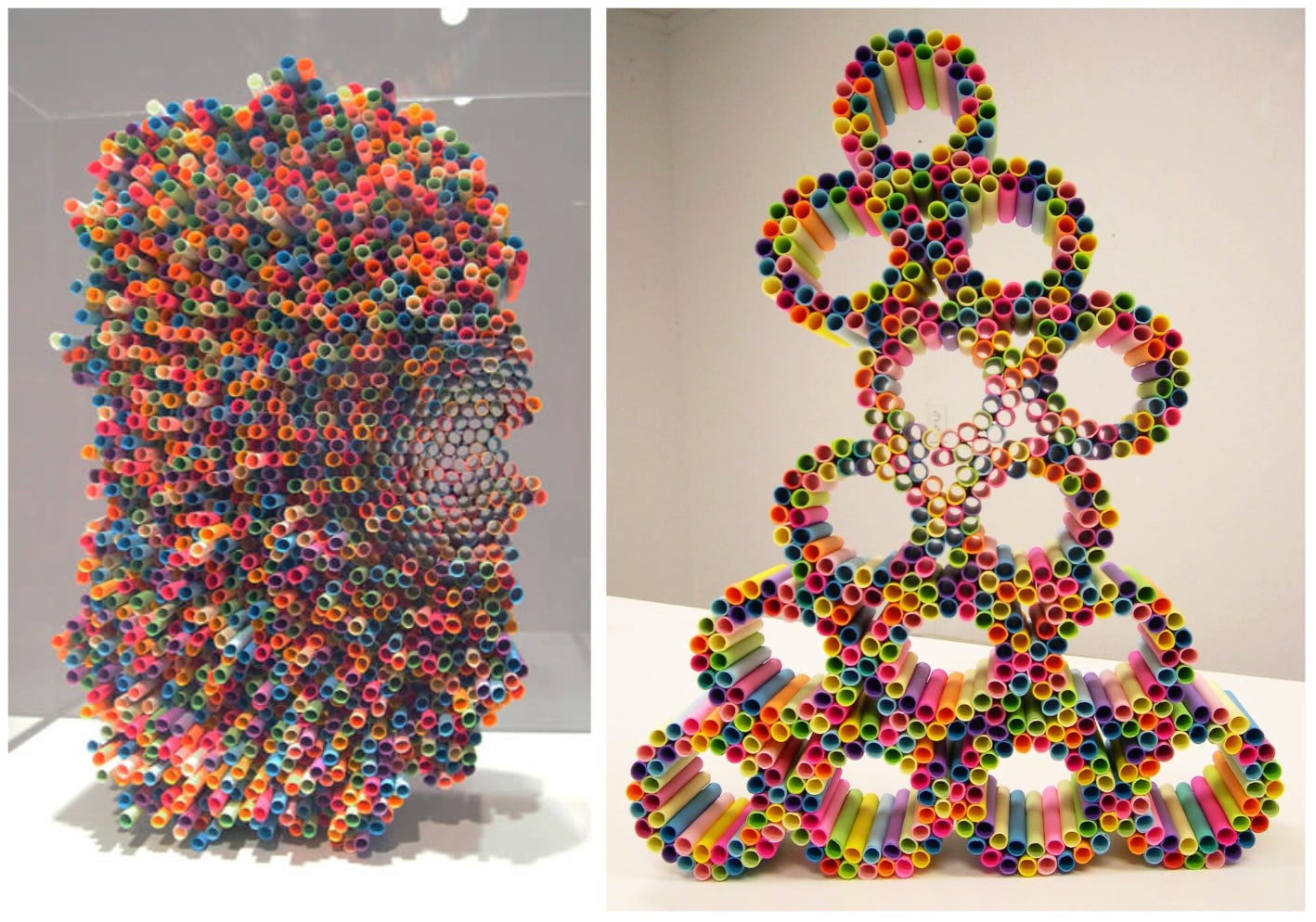What's yellow, sticky, and full of potential?
Overlooked Art Supplies Series, part 3: the humble Post-it
Hiiii everyone!
Thank you for all the birthday wishes! I’m back home from my trip to NY and have been appreciating all your kind words and your drawings for last week’s assignment/my birthday wish: to talk to strangers, draw, and vote. I’m so moved by your responses to all three. Check out the gallery at the end of this dispatch for a few highlights. Truly, this community is the best 50th birthday gift I could ask for.
Now that I’ve hopped the fence into my fifth decade, let’s get back to our regularly scheduled programming: the third and final installment in our Overlooked Art Supplies series. Today’s star:
The Post-it!
Bright, sticky, and ubiquitous, the iconic Post — it is even in the MoMA design collection. And if you’ve ever hung out with a designer, you might have a little Post-it PTSD (raises hand). Personally, I use them to mark up books and map out projects on my walls. We see them daily, at home and at work, but how much do we really know about the humble sticky square?
Maybe, like our fearless editor Candace, your first Post-it history lesson came from Romy and Michele’s High School Reunion, when our heroines try to pass themselves off as the inventors of the Post-it. Spoiler alert: it was not Romy nor Michele. (Shocking!) The creator was actually Art Fry of 3M. The rest is pop-culture history.
How The Post-It Was Invented
Art Fry can’t take all the credit, tho. The Post-it’s gentle adhesive was invented by Spencer Silver in 1968 while he was trying to develop a stronger glue. But he thought this weaker adhesive still had potential. He just didn’t know what to do with it.
Later, in 1974, Art Fry was feeling frustrated with his bookmarks falling out of his hymnal during choir practice. He wanted a way to stick his bookmarks to the page without damaging the paper. He thought of Silver’s adhesive and BOOM! The Post-it was born! As employees at 3M started using them, they realized that the Post-it was more than a bookmark. People used them to write reminders and messages. It was a totally new way to communicate. And in 1980, the Post-it was officially introduced to the world.
Fry reflected, “The most surprising thing for me is how Post-it Notes unlock the creativity of so many people. After all, it is just a slip of paper that allows you to communicate with others or store your thoughts. Yet people use them in all sorts of ways.”
Tiny Canvases: The Art of the Post-it
The 2016 #postitwars
In 2016, ad agencies launched a “war” with their neighbors in New York City via Post-it mosaics! It started innocently enough, with a “Hi” on one side, which garnered a “Sup?” from the other, and then it eventually escalated into this:
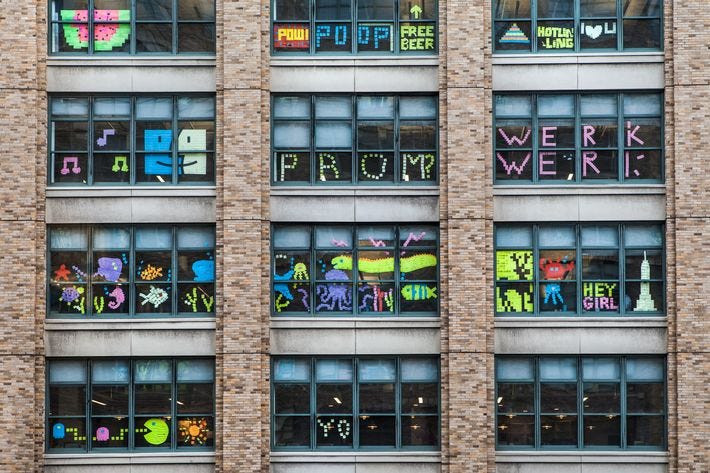
Of course it ended with a mic drop coordinated over several stories of the building!
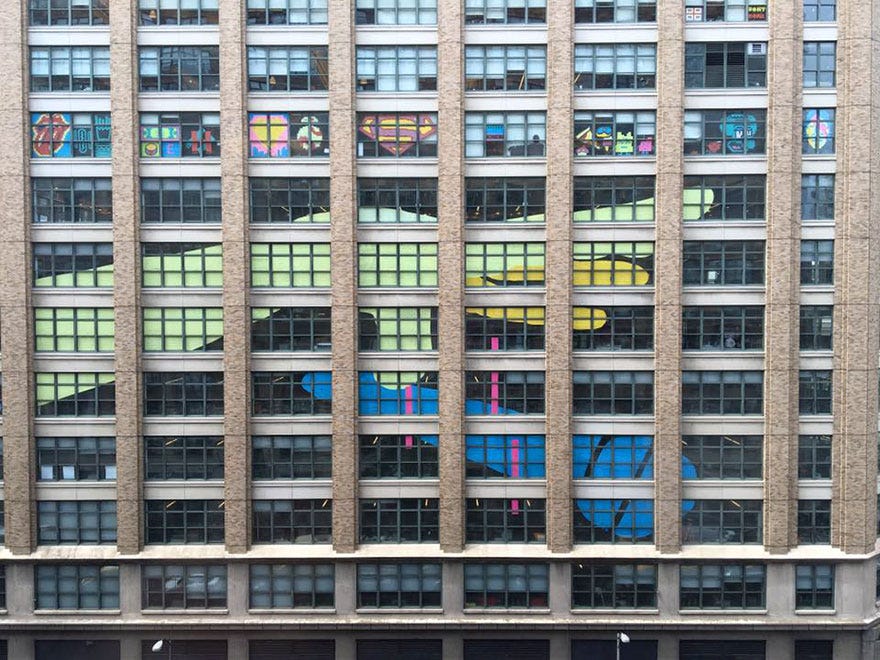
Fun inspiration for some artful window dressing at home.
Rebecca Murtaugh
Artist Rebecca Murtaugh first started exploring Post-its as an artistic medium in 2001:
“I was really mesmerized by Post-its. They come in all these colors. They are beautiful. They have a purpose, but it’s different for everyone: sometimes it’s a note, ‘I’ll be back,’ or maybe it’s a phone number. But for all these important things, the note itself is always ephemeral and temporary. Yet it’s carrying all this valuable information. So there is this duality: it’s disposable, but it’s very valuable. I wanted to mark an important space, not a book with a note, but an entire room.”
She spent six days covering every surface in her bedroom with Post-its, and then recreated this piece in her living room for the New York Times in 2007.
She has also turned Post-its into vibrant sculptures as part of the same Color-Coded series:
Matthew “Levee” Chavez: Subway Therapy
After the 2016 election, artist Matthew “Levee” Chavez put up a Post-it in a New York subway station: “Express yourself.” Over time thousands of people responded, creating a massive art installation in an unexpected place.
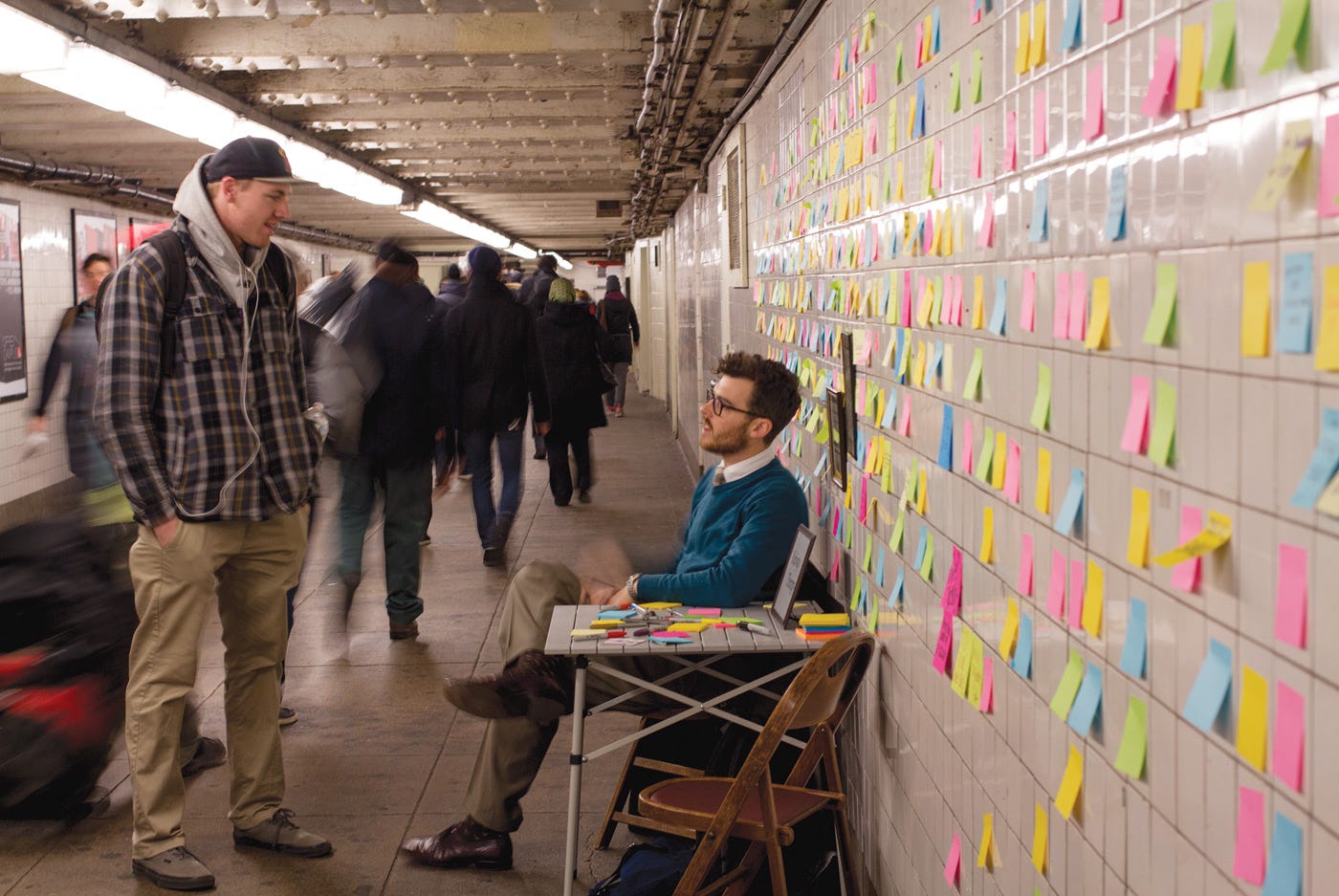
“I am trying to help people channel the energy that they have into something beautiful,” Levee said about the project. While he wanted to give people space to express their feelings after the election, he noted that it wasn’t partisan: “This isn’t about a filtered view. This is just people writing about how they feel. You should respect what they have to say in hopes that they should respect what you have to say.”

Ed Atkins: Post-it Art as Daily Practice
English artist Ed Atkins mostly works in computer-generated animations and videos. But in 2020, during the pandemic, he turned to Post-its as a convenient canvas for daily drawings that he included in his daughter’s lunchbox. He described them as “a way for me to achieve something every day.”

Afterwards, he saved each one and included them in his recent exhibition at the Tate “to teach a way of looking and accepting and feeling that might be useful for everything else.”
The Post-it Show!
Check it out - it’s AMAZING!!

What happens when you get a bunch of amazing artists to all make art on a Post-it and then feature them all together? This grand collection of Post-it art has happened annually at Giant Robot in Los Angeles — for 20 years! Artists Esther Pearl Watson, Mark Todd, and Giant Robot founder Eric Nakamura had this brilliant idea to bring well established and up and coming artists together in one renegade show of 3x3 canvases, and make art accessible and way less serious than it was in the early 2000s when it began. It’s a huge hit with artists and collectors alike.

It’s super inspiring to see what participating artists do within a 3”x3” square. If you’re in LA, the 21st show opens in a few weeks! Come visit, check out the art, and even purchase a one of a kind tiny canvas.
Alright, now that we’ve had adequate inspiration, it’s your turn….




